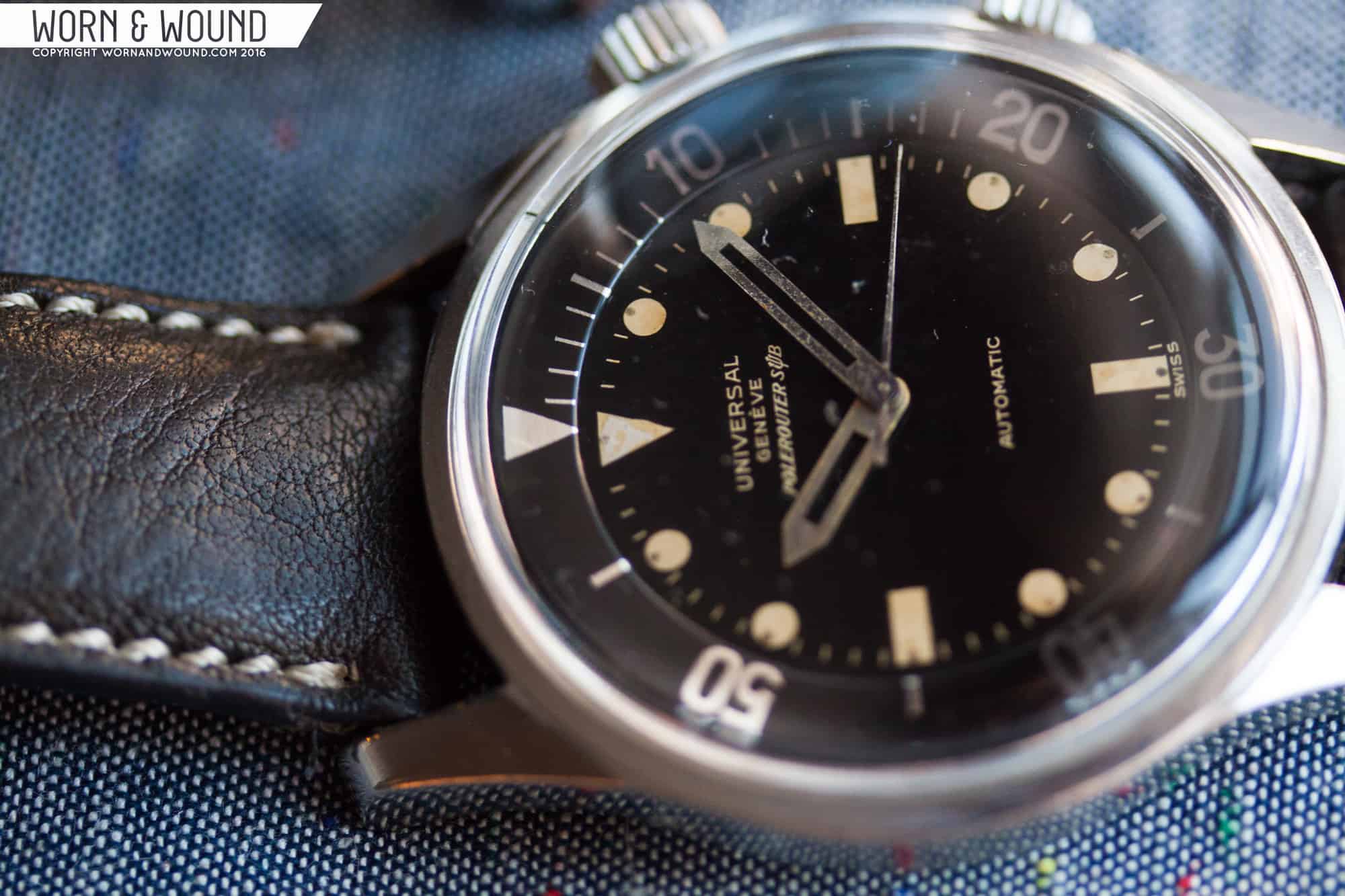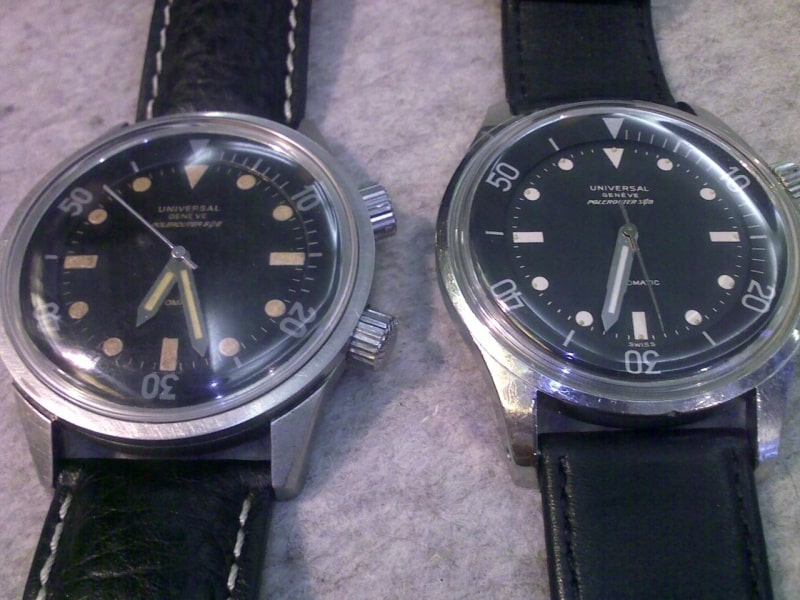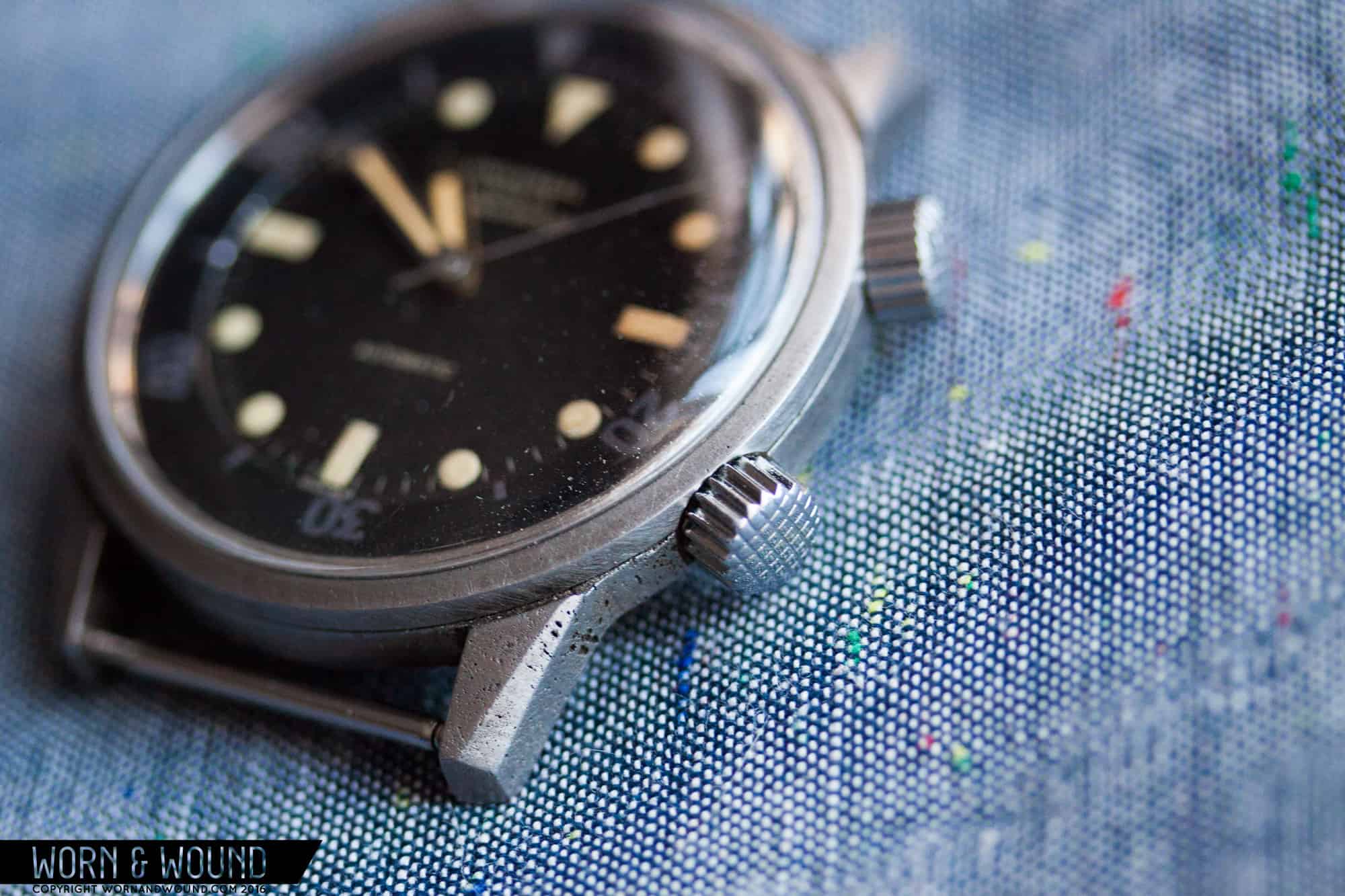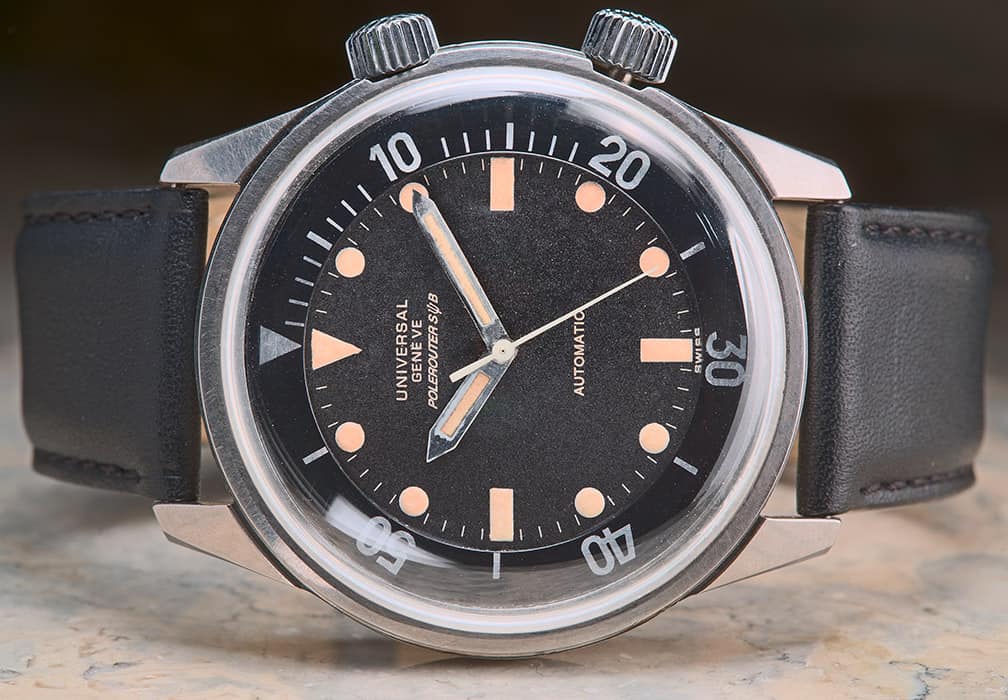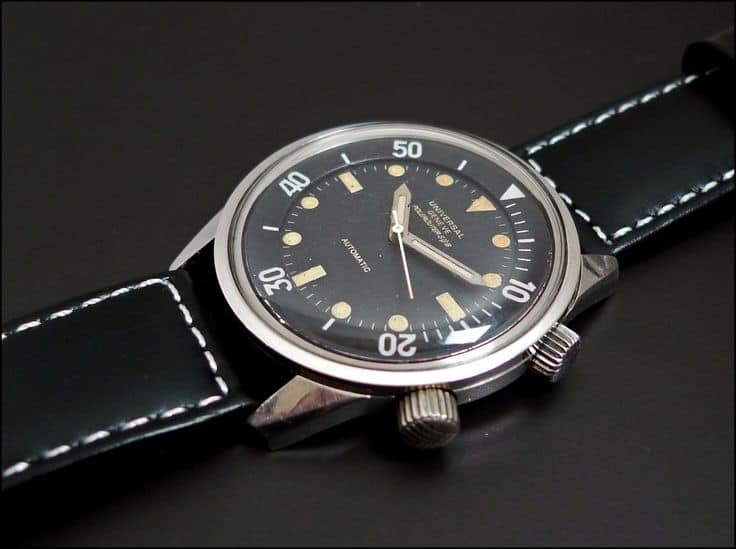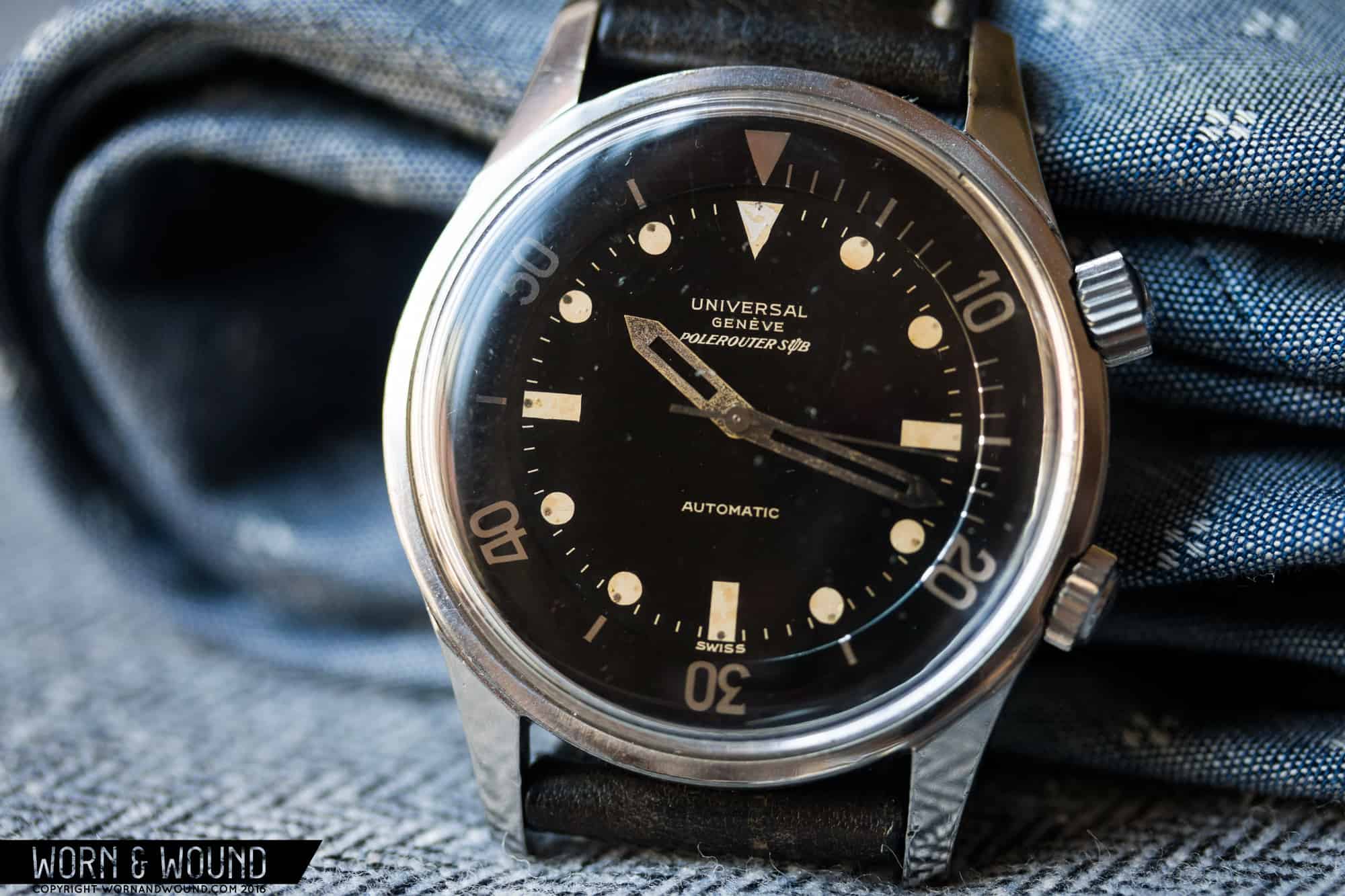Collecting vintage watches is not for the faint of heart. More often than not, the complete history and details of vintage catalogues are lost to the ravages of time. What is generally known is usually cobbled together from fragmented manufacturer archives, online sleuthing and impassioned collectors comparing gathered knowledge. Just consider how ubiquitous Rolex is as a brand today, and then consider how much we don’t yet know about some of Rolex’s vintage production. And what we do know—well, it can fit textbooks. So just imagine how much there is left to learn with regard to lesser-known brands.
Earlier this year, I wrote about the single-crown Universal Genève Polerouter Sub. It’s a beautiful piece and despite its many variations, it’s a relatively straightforward watch as far as what the collector community knows about it. It is, however, not the first Polerouter Sub. No, the first generation Universal Genève Polerouter Sub was actually a 42mm dual-crown Super Compressor (I’ll be calling it the “PSSC” for brevity’s sake), and it’s one of the most coveted Super Compressors one can get. And unlike its older brother, the PSSC is also a very controversial watch, but more on that later.









 Featured Videos
Featured Videos





